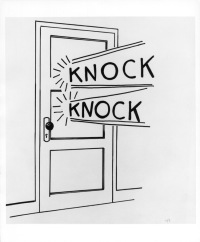Life is full of twists and turns, monumental events in the forms of tragedies and comedies, and just everyday life. I apologize for being absent on here for too long, but I am back in the saddle, again, after surviving storms of pain and pleasure.
I am finally updating what has been going on in my life. I don’t want to bore you to tears, but I want to share a few of life’s storms and rewards. My daughter is a Lyme Disease survivor of 17 years. Her battles have been relentless, but she has grown closer to God by holding on to that knot for years. The story is not over, and we believe a better day is on the horizon.
I retired two years ago and went to Europe with students at my school and their parents. My sister also went with me to try to chaperone me.
We left three days after I retired. Yes, that was an exhausting time while I cleaned out my room completely, met with students and parents on my tour for final and important information, cleaned my house before my sister arrived, and packed for Europe. Whew! I’m tired just remembering this! We visited London, Paris, Rome, and Amsterdam. My sister and I stayed behind to enjoy Ireland. Yes, we had incredible adventures and saw some of the most amazing landscapes, statues, art work, a musical performance, and a fiasco on the same train that had the terrorist attack two weeks later. Our favorites were the Anne Frank House, Zahnsee Schans, the London Eye, the Louvre, crown jewels, the Eiffel Tower during the day and sparkling at night, along with a dinner cruise in front of it, and the Sistine Chapel at the Vatican. What a trip and an awesome group!
Just a few weeks after I returned, I spent 3 1/2 months with my sister before, during, and post surgery in Texas. We discovered that she almost didn’t make it, but God allowed her more time; it was just tough.
After I returned, I attended a Writer’s Retreat in Temecula with my daughter Tiffany and learned from several editors that the picture book I wrote should actually be a chapter book. Therefore, I had to let go of my dream of having a picture book and let my story grow into a chapter book. What a difference it made! I went from 1,000 words to over 10,000 words in just two months this summer.
My sister had another surgery this summer, and I spent another 3 1/2 months in Texas again. She’s fine now! I had time to write and renew my love of writing. What did I learn in those two months? A chapter book let my characters grow quickly from birth to twelve-year-olds, immersed in a royal battle with an obnoxious witch who turned their kingdom topsy-turvy. It allowed more time for the characters to grow in bravery, self-confidence, and integrity to face and outwit her. The witch promises to get revenge, so another book is in the making.
I have rededicated myself to writing again, so onward and upward I go! Happy writing for all of us!
Carol Smith


 How does a writer know when to cut the apron strings from a finished piece? This has recently been plaguing me and causing me to question myself about my finished fairytale. How many readers do you send it to and let them critique it before you finally send it in to an agent? How many do I trust with my finished product? There are so many opinions about every little aspect, and it’s tough to know whom to trust and how many changes to make.
How does a writer know when to cut the apron strings from a finished piece? This has recently been plaguing me and causing me to question myself about my finished fairytale. How many readers do you send it to and let them critique it before you finally send it in to an agent? How many do I trust with my finished product? There are so many opinions about every little aspect, and it’s tough to know whom to trust and how many changes to make. One of the delightful requirements of teaching middle school English is that I get to teach the literary term onomatopoeia. Since most students have no idea what it means, I wanted to make sure my students did this week. I told them that onomatopoeia is a word that represents a sound. I gave examples like boom, meow, vrrrrmmm, pow, pop, moo, etc. and had them go around the room and tell a word that represents a sound. Everyone did such a marvelous job.
One of the delightful requirements of teaching middle school English is that I get to teach the literary term onomatopoeia. Since most students have no idea what it means, I wanted to make sure my students did this week. I told them that onomatopoeia is a word that represents a sound. I gave examples like boom, meow, vrrrrmmm, pow, pop, moo, etc. and had them go around the room and tell a word that represents a sound. Everyone did such a marvelous job.